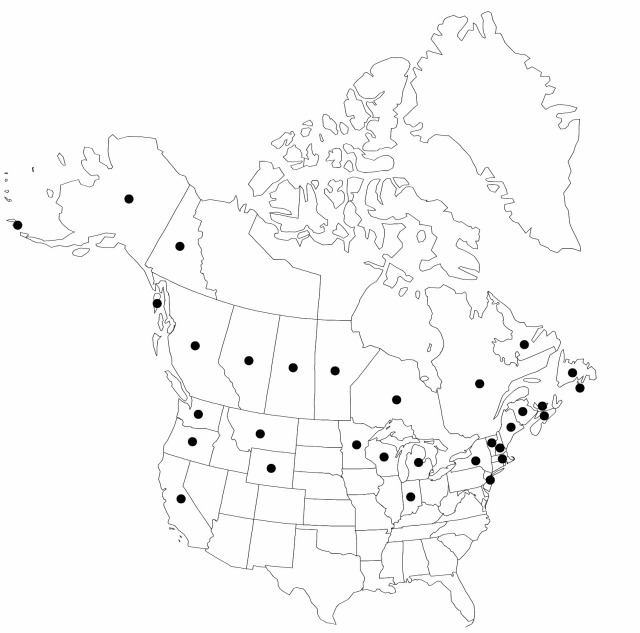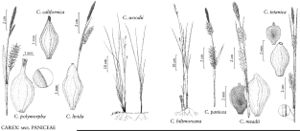Carex livida
Sp. Pl. 4(1): 285. 1805.
Plants colonial, long-rhizomatous. Culms 15–55 cm, smooth to scabrous distally. Leaves: proximal sheaths pale-brown to dark-brown, occasionally red tinged, 4.5–8 (–10) mm thick; ligules 1.2–3.9 mm, usually 0.6–1.5 times as long as wide; leaf-blades very glaucous, channeled, 4.5–40 cm × 1.5–3.5 (–6.5) mm, coriaceous. Inflorescences 2.2–8.59 (–12) cm, 0.6–1.8 length of proximal bract; proximal bract 0.8–11 mm, sheath 0–1.2cm, blade 0.8-10 cm; pistillate spikes densely flowered, ovoid to short-cylindric, 0.7–2.5 cm × 4–5.5 mm wide; lateral spikes erect or ascending on stiff peduncles. Pistillate scales pale-brown to dark purple-brown with broad green center and narrow hyaline margins, obtuse to acute. Perigynia strongly ascending in the spikes, glaucous, fusiform, 3–4.8 (–5) × (1–) 1.3–2 mm wide, heavily papillose; beak absent or minute, erect, straight. Achenes pale to dark-brown, 2.1–2.5 × 1.2–1.8 mm wide. 2n = 32.
Phenology: Fruiting late spring–early summer.
Habitat: Boreal fens, calcareous floating mats
Elevation: 0–1100 m
Distribution

St. Pierre and Miquelon, Alta., B.C., Man., N.B., Nfld. and Labr., N.W.T., N.S., Ont., P.E.I., Que., Sask., Yukon, Alaska, Calif., Ind., Maine, Mass., Mich., Minn., Mont., N.H., N.J., N.Y., Oreg., Vt., Wash., Wis., Wyo., Central America (Panama), South America, Eurasia
Discussion
The distribution of Carex livida is very scattered; it is uncommon to rare over much of its range, especially in districts with predominantly acidic soils.
Plants occurring disjunctly in acidic soils of the New Jersey pine barrens are unusually broad leaved, occasionally with leaves to 6.5 mm wide. These populations need further research to assess their status.
Selected References
None.
Lower Taxa
"shortened" is not a number."broad" is not a number."lengthofproximalbract" is not declared as a valid unit of measurement for this property.
